Kerak Castle dominates the hillside of the village of Al-Karak.
I didn’t manage any good photos looking up at the Castle, so I am using this one from Wikipedia, by a German photographer named Berthold Werner.
The road you see to the bottom left of the picture is the very road we drove in approach to the city. Â We drove the spectacular highway from Mazra’a (which means “farm” in Arabic) just south of the Dead Sea along Wadi Bin Hammad (a big Valley called Bin Hammad) to Al-Karak. Â Like just about every drive we’ve had in Jordan, the scenery was spectacular.
Kerak castle was built around the 12th century AD by a Crusader king named Pagan the Butler. Â I can’t remember much else about who lived in it, what they did, or when they left, but I remember that Pagan the Butler built it because who can forget a Castle built by a guy with a name like Pagan the Butler?!
It’s obvious, though, WHY it was built there.
You can see ALL THE WAY to the Dead Sea. Â You’d be able to see anyone coming at you from days away. Â And, they’d have a tough time reaching you in your big castle up on the hill — straight drops on 3 sides around the valley!
Impressive views — impressive enough to brave the bitter cold wind and misty rain that was falling while we were there.
To the western side of the castle is a little museum. Â The museum is well-done, showing detailed maps of the area, history of the Crusaders in the region, and a variety of ancient treasures found at the site from long before the Crusaders moved in. Â In other words, folks have set up camp in this spot for thousands of years. Â Wonderful classical age Greek pottery, among other well-preserved pieces of ancient history, rest inside the museum, some dating back to 6000 BC. Â Part of the museum is an actual tomb that holds skulls and human bones dating back to around 4000 BC!
Will took this picture, to show ancient rocks shaped into tools — something he has been studying in school.
From the museum, you can go back up to the castle proper.
The castle has very well perserved passage ways that go several stories through the mountain.  We were clever to have brought along a flashlight (thanks, Rough Guide!) and let the kids explore the dark tunnels.
I went a little higher for another photo of the valley — see the point of rock in the foreground in the bottom left? Â That point was the end of the ground, for a long-long drop down! Â The wind kicked me off balance while trying to take some pictures, so I didn’t stay here long (and requested that Paul and the kids not follow in my foolish lead!)
Inside the tunnels are the kitchens, barracks for soldiers, and huge court rooms.
Every once in awhile, you’ll shoot out of a tunnel into the light — finding small surprises.
Arched doorways remain where parts of the castle no longer stand.
This is the view East — including the Kings Highway (below).
You can see where part of the upper floors have collapsed, which gives a sense of what it is like to be in the other parts of the castle that are intact.
The kids spent a good hour running around with their flashlight, making up stories about what the rooms were used for, who had been in them, and what they could be for today.
Here is a sense of what one can find in a dark room — this is lit only by the flashlight!
Doorway into the sunshine…
Windows? Â Doors?
Long entry — this was along the Crusader-era entrance (now not used).
A little more light to show how the rocks are used to form the cave.
For a cold and rainy afternoon, Kerak Castle made for a wonderful side-trip from the Dead Sea and a great adventure!
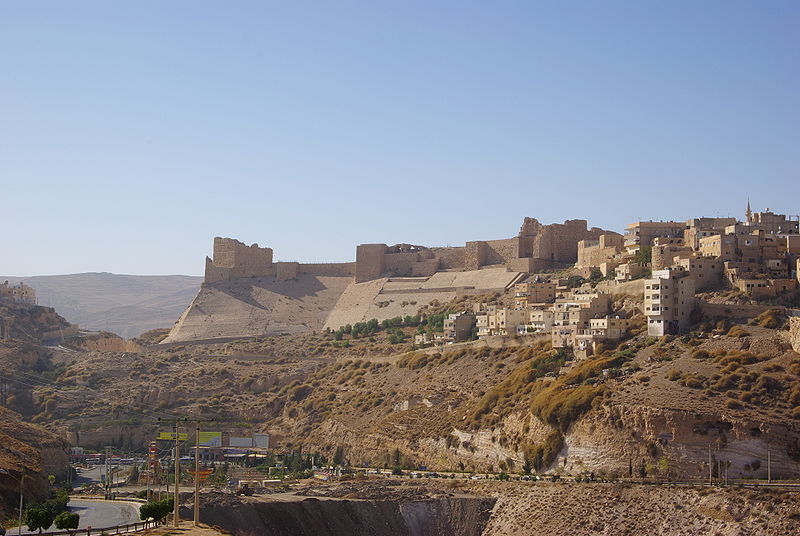
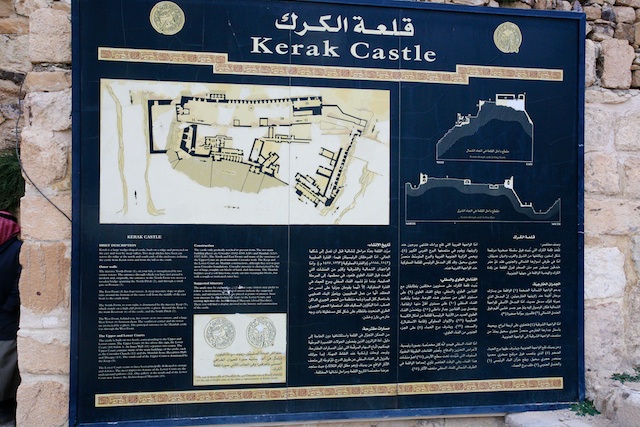
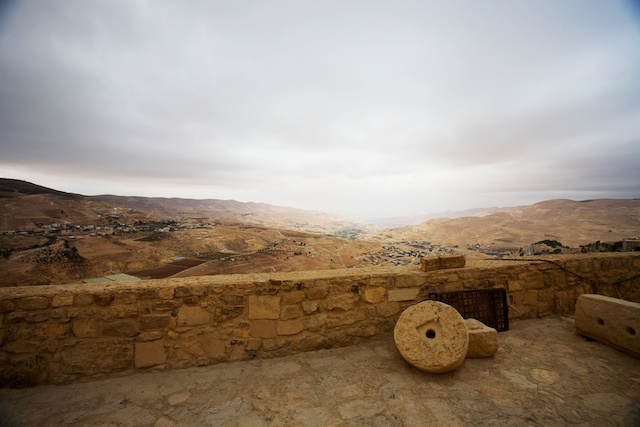
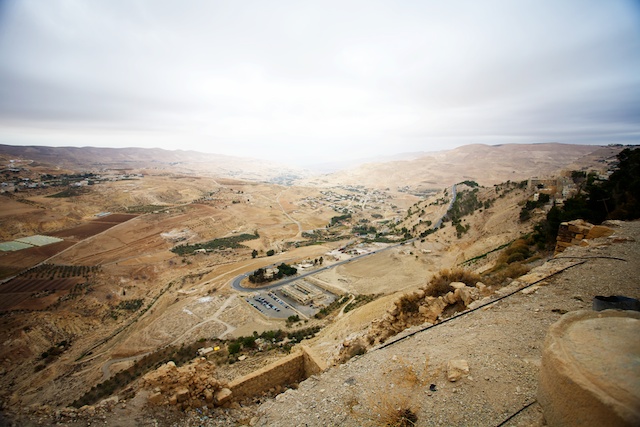
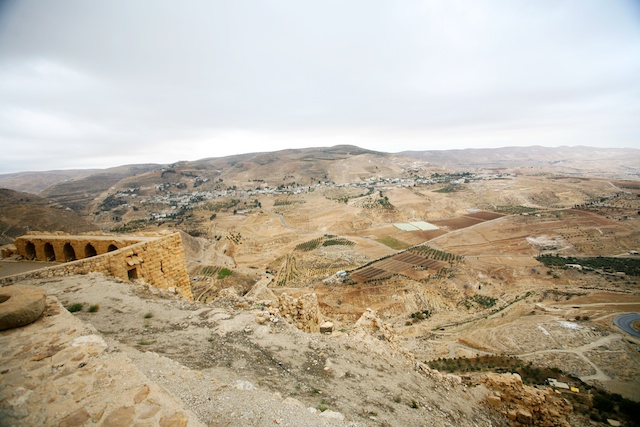
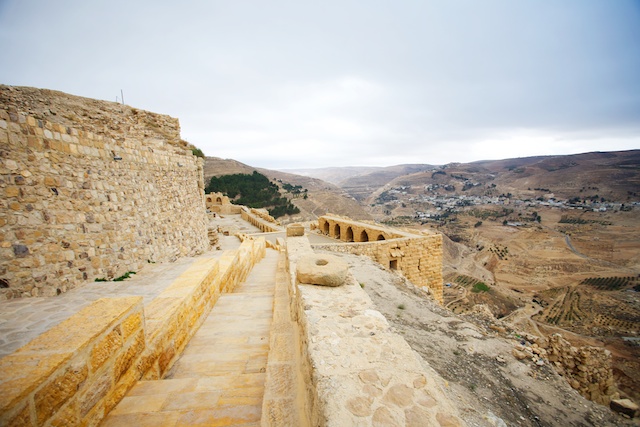
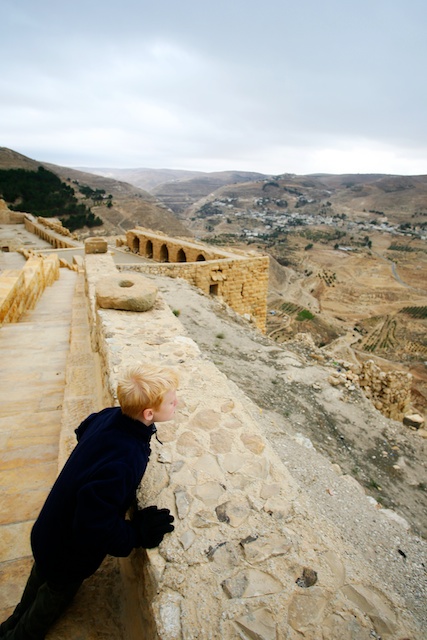
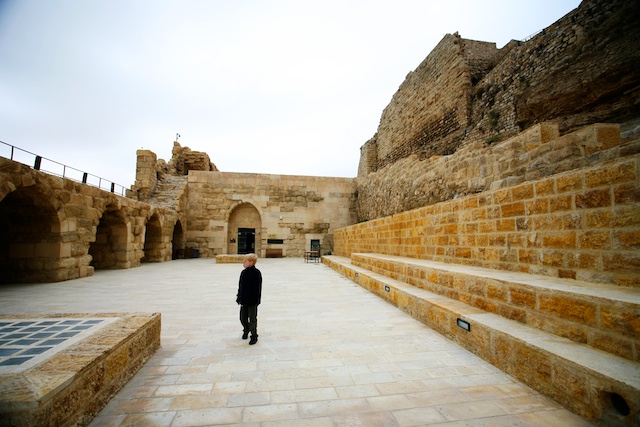
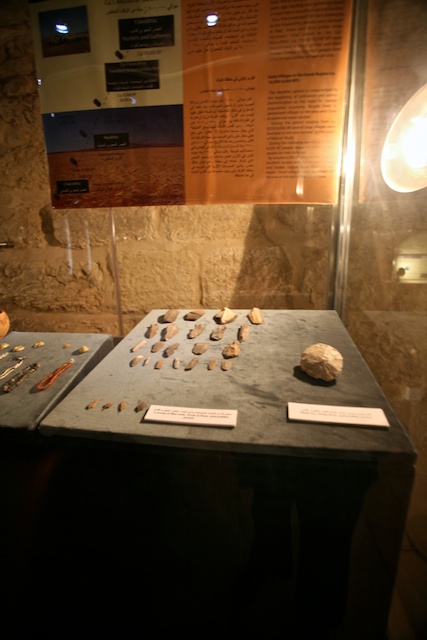
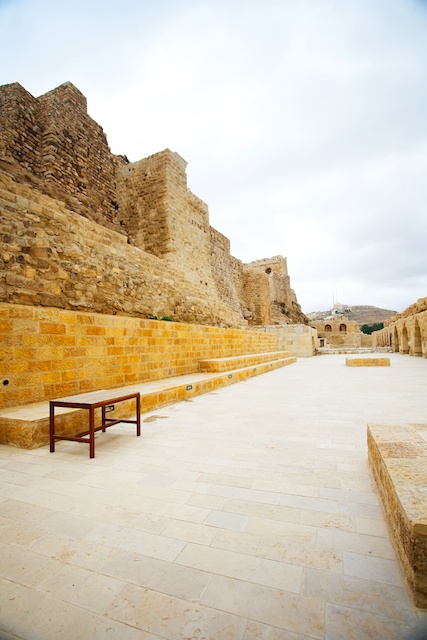
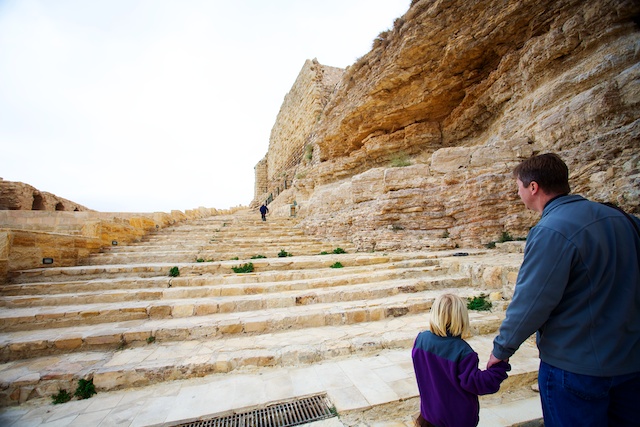
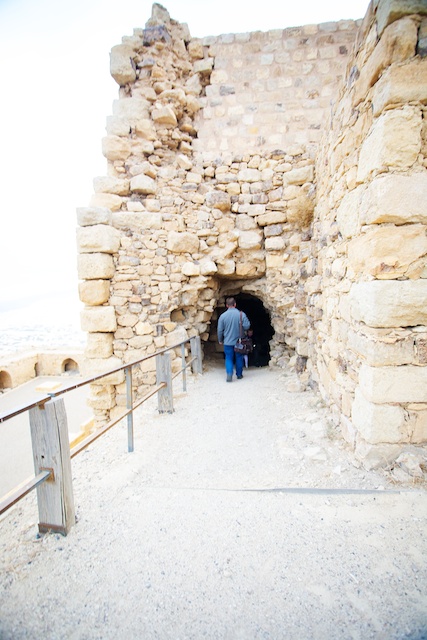
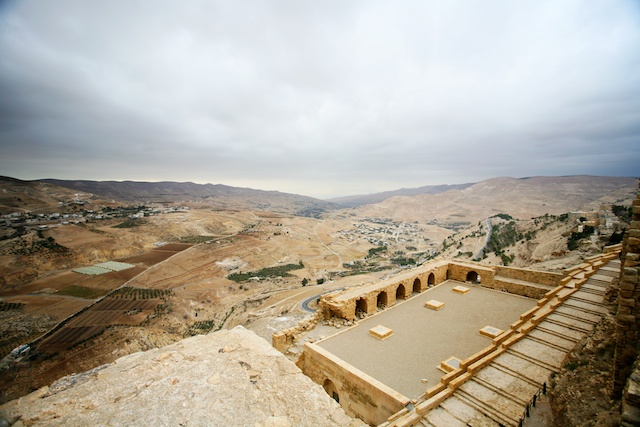
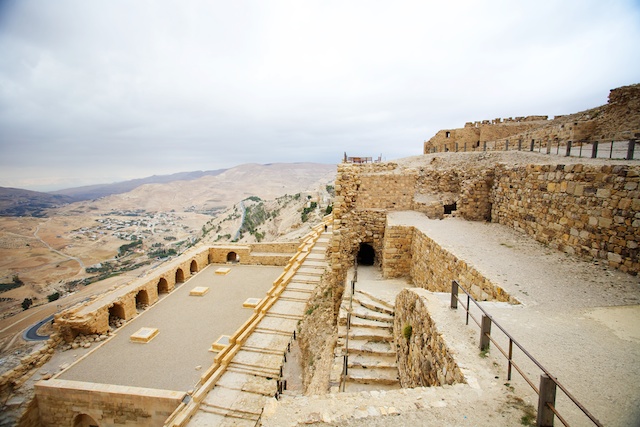
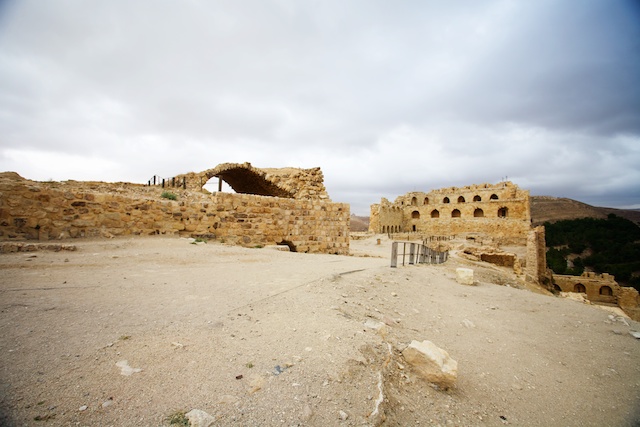
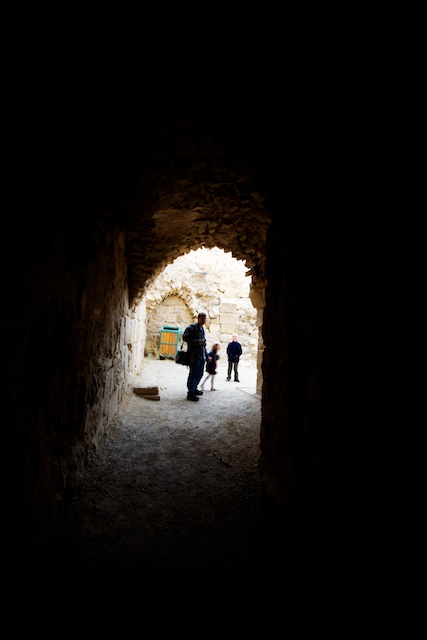
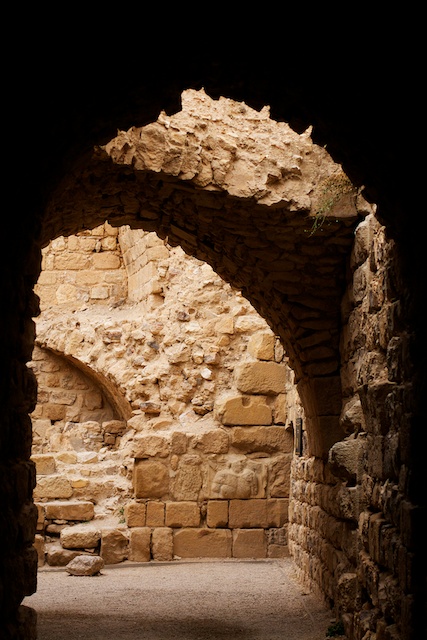
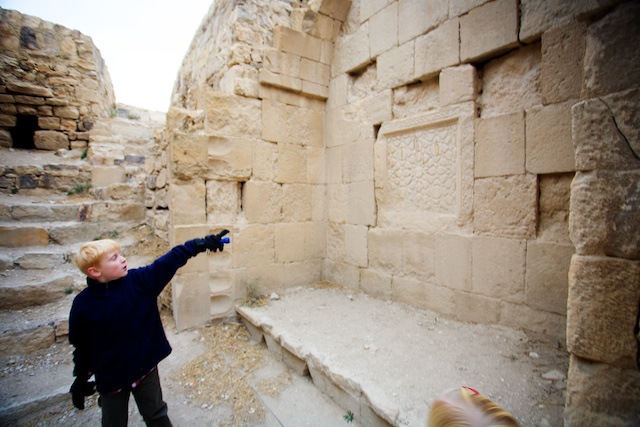
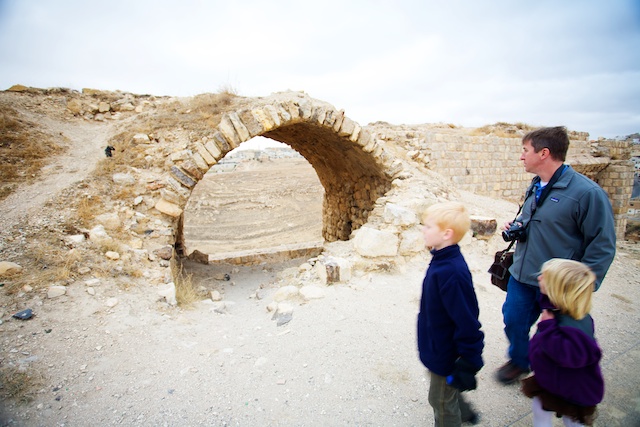
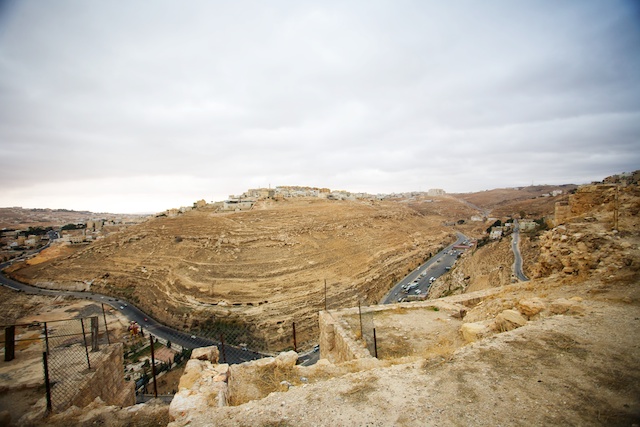
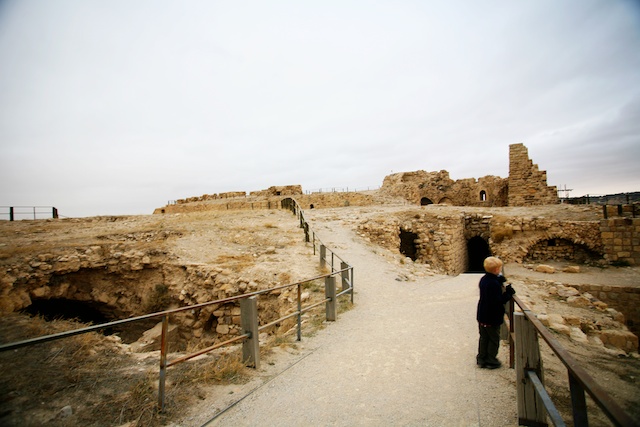
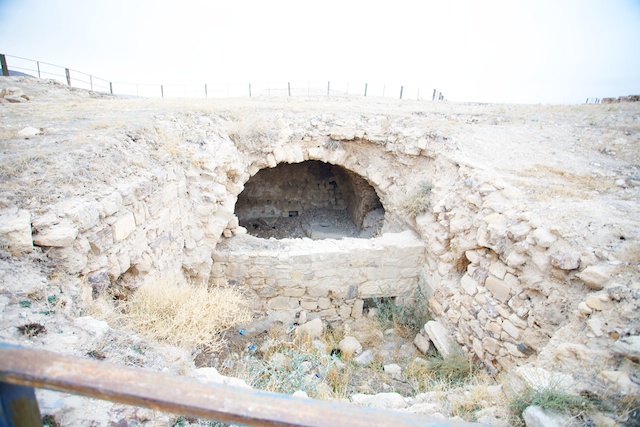
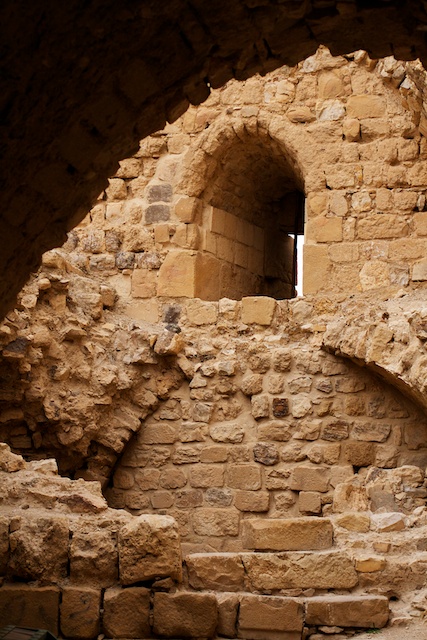
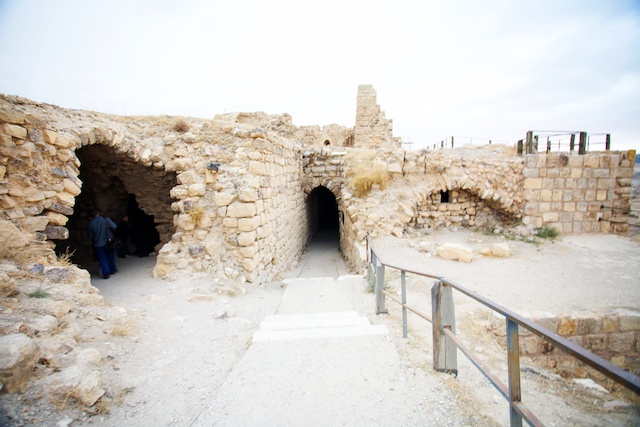
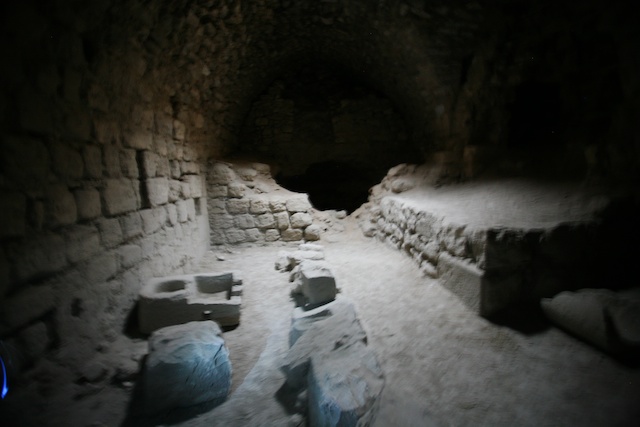
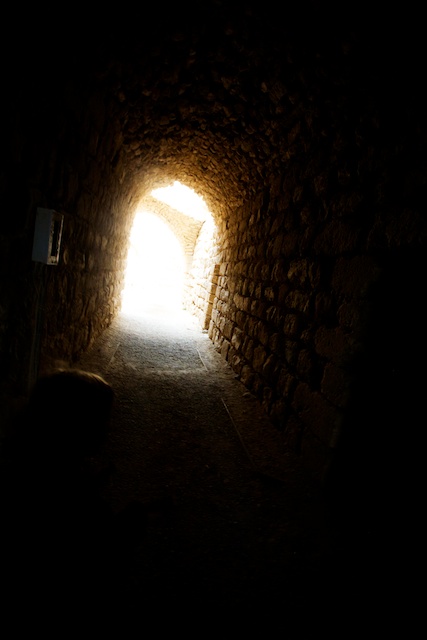
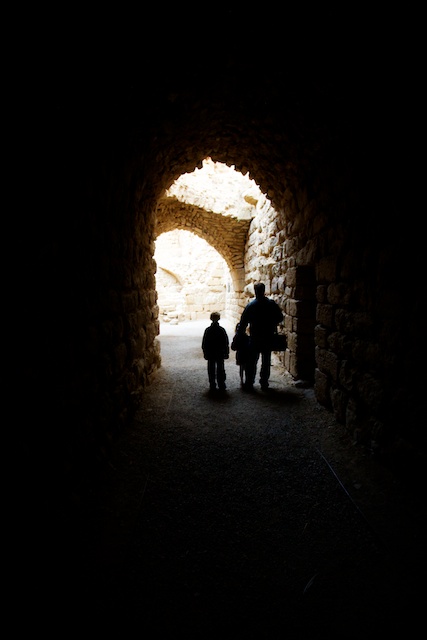
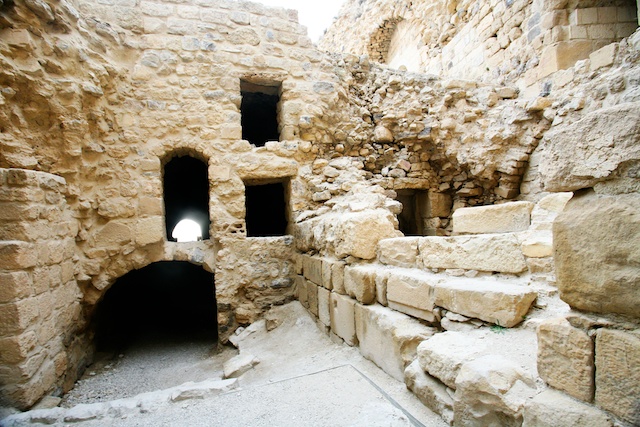
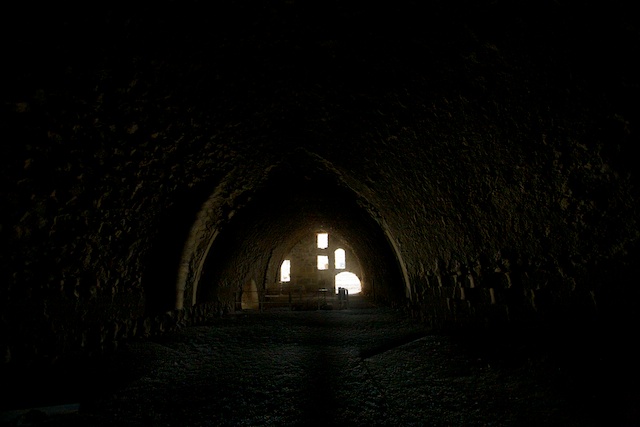
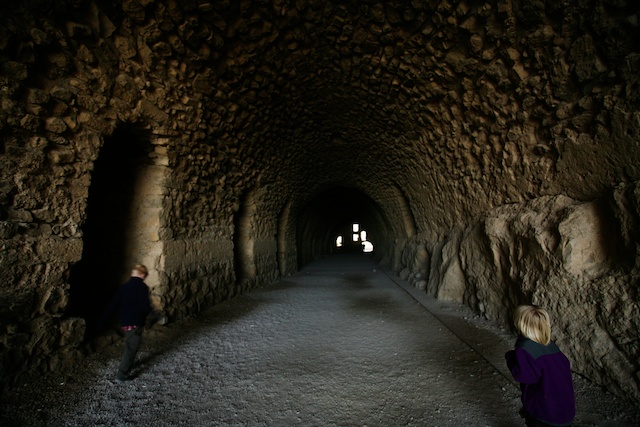
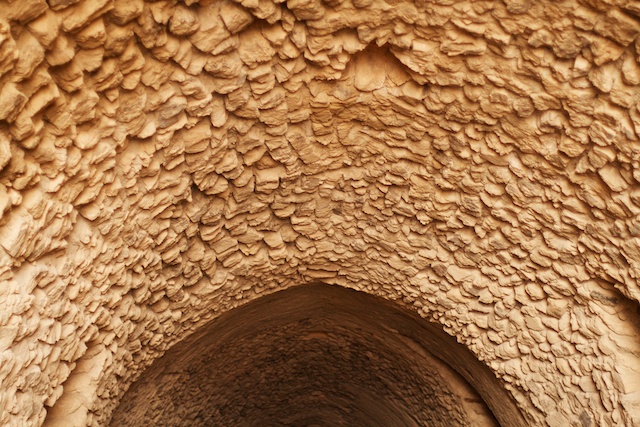









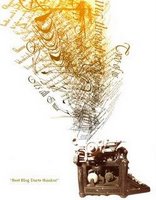





Post a Comment